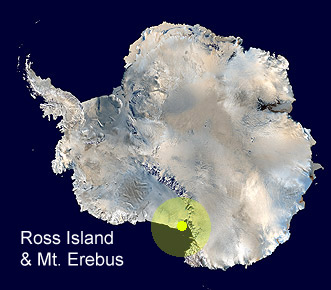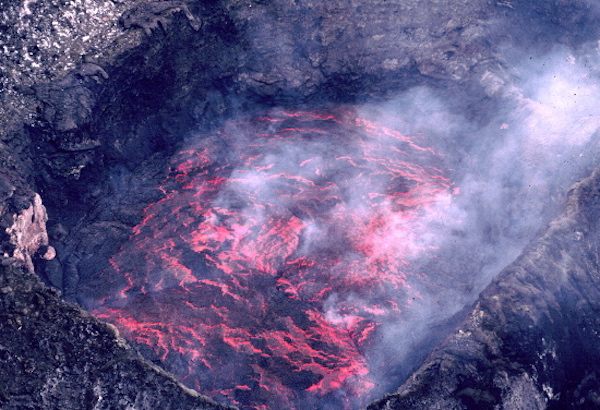The Antarctic volcano that erupts gold

In a recent discovery, scientists have found that Antarctica's tallest active volcano emits gold particles along with volcanic gases, and in a not exactly negligible amount.
Mount Erebus, which is still volcanically active, was detected spewing gold. In fact, this discovery was first made in 1991 by American geologists.
The new discovery remains consistent with the detection of gold emission from the volcano in 1991. Both then and now, researchers have detected gold particles in volcanic gases emitted by the volcano, as well as in the surrounding snow.
Scientists' assessments suggest that daily gold production is about 2.8 ounces (80 grams), which appears to be consistent with what was observed in 1991.
The gold deposits probably originated from volcanic rock
Philip Kyle, of the New Mexico Institute of Mining and Technology in Socorro, clarified that gold deposits can originate in volcanic rock.
When lava from the mountain – which has a summit elevation of 3,794 meters – emits hot gas, this carries some gold particles into the air.
Mount Erebus apparently sprinkles bits of gold measuring between '0.1 and 20 micrometres' in the volcanic gases and '60 micrometres' in the surrounding snow.
This volcano is one of 138 active volcanoes in Antarctica. According to Geo News, the volcano, which joins Deception Island, is one of two active volcanoes in the region and spews gold dust, worth $6,000, every day.
Located on Ross Island in Antarctica, the volcano's gold deposits appear to come from volcanic rock. Experts have found that the emission of hot gas during volcanic activity carries gold particles into the air.
Furthermore, Mount Erebus is also of importance due to a tragic event that occurred in 1979, when Air New Zealand Flight 901 crashed into its side, causing the loss of all passengers and crew.
Gold detected 621 miles from Erebus' southernmost lava source
The National Aeronautics and Space Administration's (NASA) Earth Observatory reported that dust from the precious metal was detected 621 miles from Erebus' southernmost lava flow. This is 12,448 feet (3,794.02 meters) high, as part of other spill phenomena.
NASA said: “It regularly emits plumes of gas and steam and occasionally spews rock (bombs).”
Conor Bacon of the Lamont-Doherty Earth Observatory at Columbia University, New York, says that this volcano has been continuously erupting since 1972.
Among other things, Mount Erebus also has a "lava lake" in one of its summit craters, even large ones, in a land normally covered with ice
“These are actually quite rare, as some very specific conditions need to occur to ensure the surface never freezes.”
Due to the lack of knowledge about volcanic formations in Antarctica, it is difficult to understand the possible events that could activate the other more than one hundred icy volcanoes.
As Geo News reports, Bacon explained that Erebus and the Isle of Deception have a limited number of “permanent monitoring instruments” that “consist primarily of seismometers to detect seismic activity associated with volcanic unrest.”
“From time to time, researchers deploy larger networks of instruments to conduct specific studies, but this of course comes with an enormous number of logistical challenges compared to the many, much more accessible volcanoes in other parts of the world.”
It is not easy to observe molten rock amidst the ice. In comparison, Etna or Mauna Loa are much easier to follow.

Thanks to our Telegram channel you can stay updated on the publication of new Economic Scenarios articles.
The article Antarctic volcano erupting gold comes from Economic Scenarios .
This is a machine translation of a post published on Scenari Economici at the URL https://scenarieconomici.it/il-vulcano-antartico-che-erutta-oro/ on Sat, 20 Apr 2024 05:15:47 +0000.


